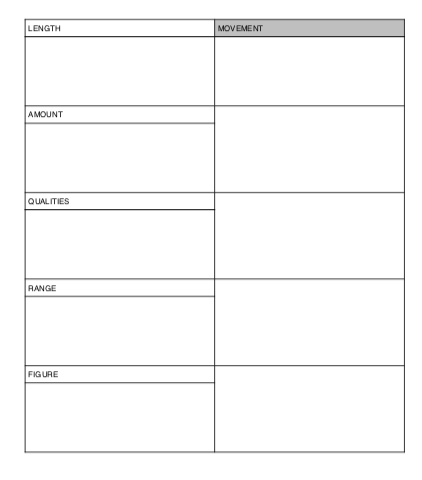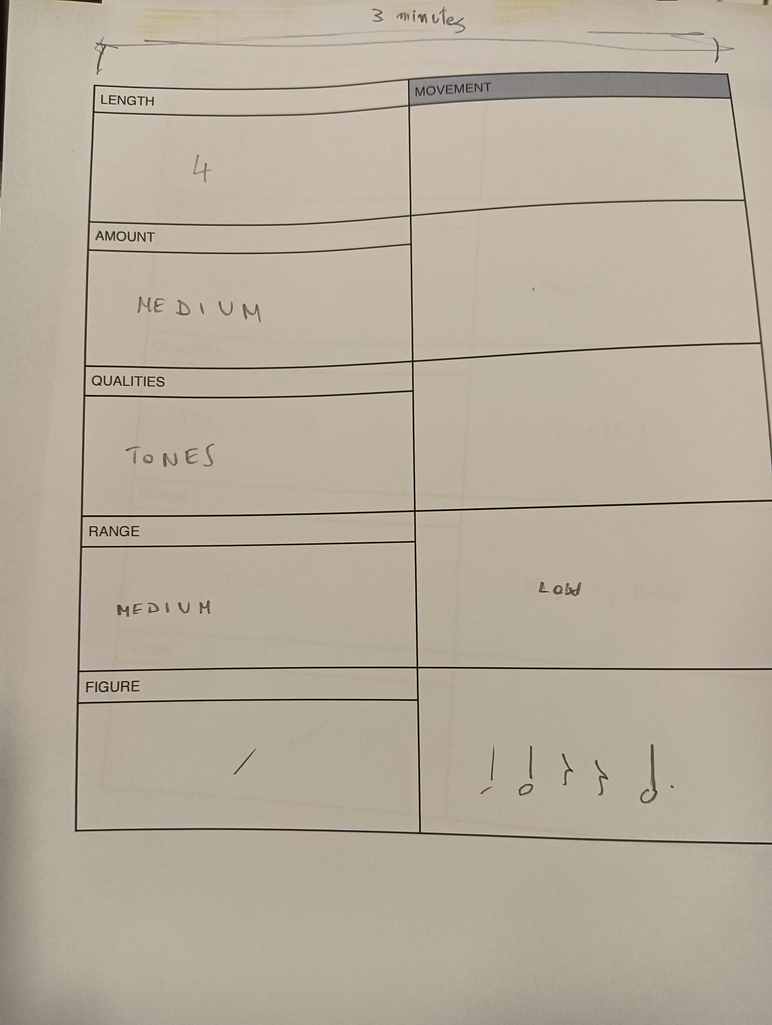- HOW / Parameters
the simple score allow musicians to understand easily, but of course such an “open” notation requires an additional guidance; from their questions and observation I refined my concepts, and together we are developing a primal language.
The main fixed rules, when playing with the metronomes is that each tone/sound must start and end on the pulse.
Than we need to know the length of the sounds, I rawly established this 4 “moods”
- DENSE
play on each beat
- MEDIUM
leave space between 1-4
- SPARSE
play rests between 4-8
_a) Single particles lost in space
_b) Cloud (moving with the rest of the group, or with part of them)
- EXTREME (sparse)
play sounds sometimes breaking the predominant silence
all of the moods can be played regularly or irregularly.
Additionally, I pointed out some subgroups:
- Play Sequence / Pattern
- Play Random / Free
- Play with loops (change length)
- Freeze (stay on the sound you are on an hold it still)
- Stuck (stay “stuck” on one “star” of the constellation, playing the pulse)
- Morphing (can be to different timbre, to the voice, between different “moods”)
Other revenant parameters are the range/register in which the tone is played, and the dynamic, even though I generally ask the players to be as neutral as possible, mezzoforte, imagining being a midi orchestra, because in this way the result is much more homogeneous and the sounds get to blend easily in each other.
As I mentioned before, we conducted meetings with single musicians where we explored the instrument seeking solutions to reach our “glitched” TARGET sound; when meeting with more musicians, unfortunately, I can not always focus much on the qualities of the sound: about the timbre, I used the generic definition of Tone, Pitched percussive sound, Un-pitched percussive sound.
There are many other specific parameters I could use only with some specific musicians, for example, if I am working with saxophone players on extended techniques, I may ask them to play multi-phonics including the given tones.
After recording several sessions with different organic, I could layer them on the sequencer, have an overview of the structure, and edit them at my need: through this process, I produced some of the “linear” composition you can hear in the recordings.
To test and further develop the parameters, I realized blank cards for indications defining the Length of the tones, the Amount, Qualities, Range, and eventual rhythmic figure. In the second row, they indicate the eventual developments in each of the given parameters: the transition can happen suddenly or in a given time lapse; the cards can be applied by all the musicians simultaneously, part of them, or individually. The cards are to be filled by the composer, or by the musicians collectively.



